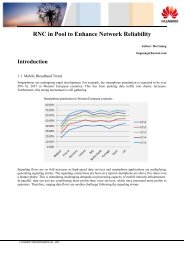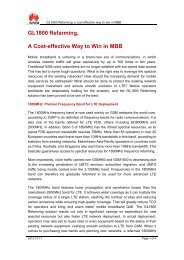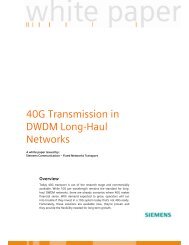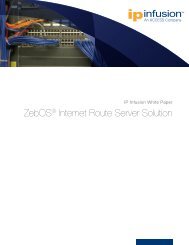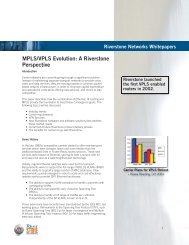Welcome to the Human Network - Light Reading
Welcome to the Human Network - Light Reading
Welcome to the Human Network - Light Reading
You also want an ePaper? Increase the reach of your titles
YUMPU automatically turns print PDFs into web optimized ePapers that Google loves.
Industry’s First Subscriber- and<br />
Application-Driven Solution<br />
The close coupling of subscriber-aware and application-aware functions enabled by <strong>the</strong><br />
Cisco Intelligent Services Gateway (ISG) and Cisco Service Control Engine (SCE) allows<br />
service providers <strong>to</strong> dramatically enhance <strong>the</strong> quality of experience for triple-play services.<br />
Traditional subscriber management systems can enhance <strong>the</strong> user experience through<br />
pull-based techniques such as parental control, self-care, or turbo-but<strong>to</strong>ns that accelerate<br />
performance for a specific application in a specific timeframe based on a subscriber<br />
request. The integration of <strong>the</strong> Cisco ISG and Cisco SCE enables new push-based network<br />
features that are application-driven, allowing subscribers <strong>to</strong> select an application or set of<br />
applications for au<strong>to</strong>matic prioritization based on individual needs and preferences.<br />
Personalized Subscriber Management<br />
As service providers transform in<strong>to</strong> experience providers, <strong>the</strong>y must sufficiently control<br />
network access in order <strong>to</strong> identify, in real time, subscribers and <strong>the</strong> services <strong>the</strong>y use. To<br />
do this requires a clear understanding of who subscribers are, what services <strong>the</strong>y are using,<br />
and what policies govern each account.<br />
Cisco Service Control Engine (SCE)<br />
This carrier-grade network element inspects packets within each traffic flow, making <strong>the</strong><br />
network application-aware and subscriber-aware. The Cisco SCE communicates with a policy<br />
manager <strong>to</strong> differentiate between different types of traffic, prioritizes traffic flows, and <strong>the</strong>reby<br />
optimizes <strong>the</strong> network <strong>to</strong> meet specific Service Level Agreements (SLAs).<br />
Cisco Intelligent Services Gateway (ISG)<br />
This function, available in intelligent edge routers such as <strong>the</strong> Cisco 7600 and 10000 Series<br />
platforms, au<strong>to</strong>matically detects when users are accessing <strong>the</strong> network and determines<br />
both <strong>the</strong> type of services each user wishes <strong>to</strong> access and <strong>the</strong> type of device that is being<br />
used. The Cisco ISG has <strong>the</strong> intelligence <strong>to</strong> manage access for both IMS and o<strong>the</strong>r<br />
non-SIP-based services, by many different types of devices.<br />
Capabilities such as multidimensional identity simplify au<strong>the</strong>ntication, permitting<br />
sign-on from any access point <strong>to</strong> a multitude of services. Subscriber profiles become<br />
extensible based upon usage, enabling high-quality, tailored service delivery. Integrated<br />
local policy management allows service providers <strong>to</strong> dynamically apply QoS on a<br />
per-subscriber basis. By locally administering policy for well-defined services, <strong>the</strong><br />
Cisco 7600 and 10000 Series platforms empower experience providers <strong>to</strong> dynamically<br />
personalize services and address subscriber-specific preferences that can enhance<br />
overall application performance.<br />
Policy Management<br />
Cisco policy management uses intelligence in <strong>the</strong> edge routers for au<strong>to</strong>matic detection when<br />
users access <strong>the</strong> network and allows for <strong>the</strong> option of using au<strong>the</strong>ntication, authorization, and<br />
accounting (AAA) servers for operational duties. Cisco allows <strong>the</strong> network or a centralized policy<br />
management system <strong>to</strong> detect policy triggers or make policy decisions.







